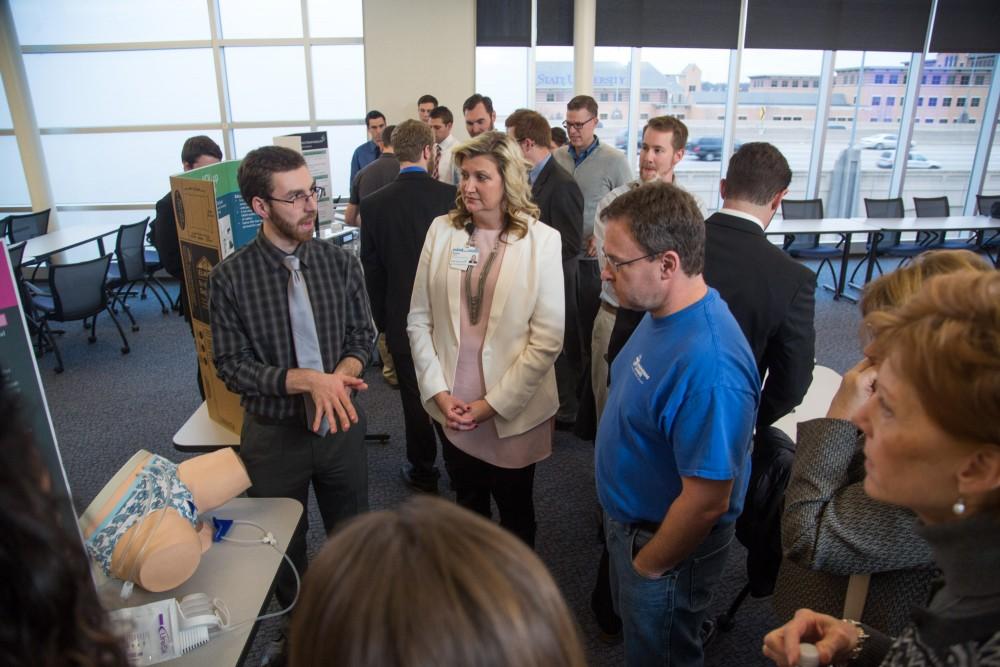Spectrum Health Innovations seeks help from GVSU students

GVL / Courtesy – GVSU University Communications
Jan 28, 2016
Through a collaboration between Grand Valley State University and Spectrum Health Innovations (SHI), students in the field of engineering, business and computer science are being given the opportunity to develop medical devices and technologies for hospital use.
When starting the collaboration, physicians and staff from Spectrum Health will approach the team at SHI with possible solutions for real-life medical problems. If the issue is something that can be tackled by a GVSU class or graduate student, SHI will then contact the appropriate department for assistance.
Brent Mulder, senior director at SHI, said students are in frequent contact with clinicians as well as SHI staff as they develop prototypes for medical devices.
“It’s an engagement throughout the whole process,” Mulder said. “Students get to come into the Spectrum environment, meet with clinicians, and discuss the problem. When they make a prototype, we bring it back to the clinicians and they say it’s either good or it needs work. We then give them feedback on what could be better.”
Projects are also designed in a way that encourages students from both the engineering and business fields to work together as one team. In some cases, SHI will assign projects that require the involvement of computer science majors as well.
Since establishing the collaboration in 2014, Mulder said GVSU students have helped to create close to a dozen products. Of these dozen or so devices, a couple have been licensed out to students who have gone on to start their own companies.
One such licensed device was an endotracheal tube holder created by Eric Van Middendorp, a GVSU engineering alumnus. Mulder said the product was created to prevent patients who are coming into consciousness from removing their breathing tubes.
“We worked with Middendorp and had gone through a number of different design iterations,” Mulder said. “He later went on to start a company and even won some competitions. He is now out raising money to fund it.”
As of today, GVSU students are working with SHI to complete five different projects, two of which will be entered into the 2016 MWest Challenge. These include a mechanical IV pump and a female urinary device.
Mulder said some of the students SHI has worked with go on to business plan competitions like the MWest Challenge to gain traction and raise funding.
“We’ve had probably a dozen projects with GVSU, and of those we have a couple that have been licensed out to students who have started companies,” he said. “The majority are a great idea and pretty neat solution, but because it’s really early stage development, trying to raise funding around those concepts is quite difficult.”
Wael Mokhtar, director of the school of engineering at GVSU, said the partnership between GVSU and SHI allows engineering students in particular to learn about a field they may someday work in.
“The biomedical field is a growing engineering field that challenges students beyond the classical engineering field,” Mokhtar said. “Having students, both undergraduate and graduate, cooperating with people from the medical field allows them to understand engineering and medical terms necessary to design a product.”





















